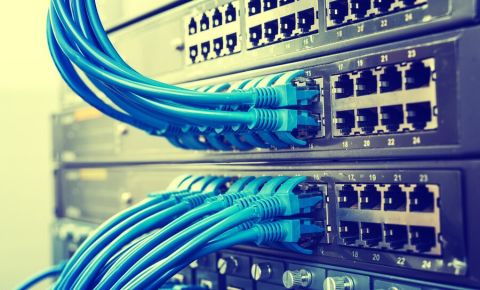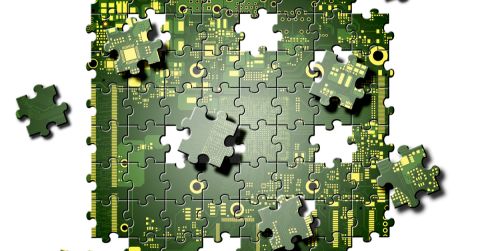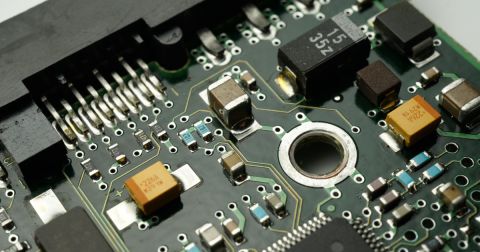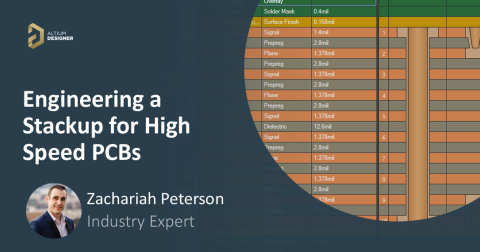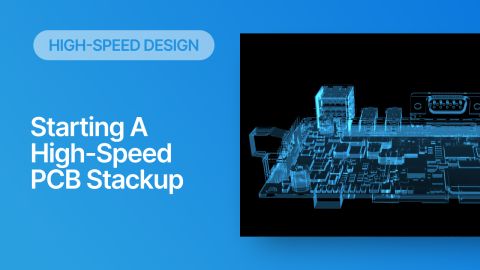Is FR4 the Best Material Choice for High Speed PCB Design?

Most of the PCBs that are manufactured every year are produced using FR4 PCB materials. FR4 is a grade of material, not a specific laminate product, but it encompasses a wide range of possible options with the same safety and flammability ratings. Devices produced on FR4 have a wide range of functionality, spanning high power, high speed, and RF design. Some vendors also offer FR4-grade materials in small layer thicknesses, which are suitable for HDI PCBs.
With FR4 being such a versatile grade of materials, it can be hard for new designers to reconcile these facts with overgeneralized high-speed PCB design guidelines. If you start looking at guidelines from amateurs masquerading as professional PCB designers, you will see statements such as:
- High-speed designs require low Dk laminates.
- FR4 materials have too much loss for high-speed signals.
- Critical length on standard FR4 materials is too short to be useful.
These statements are poorly contextualized or, in the case of the last statement, grossly overgeneralized and irrelevant. The reality is that FR4 materials can be used in PCBs to support a wide range of signal speeds and frequency ranges. And if you don't believe me, think for a moment about the material used to build the motherboard, hard drive, and RAM sticks in your laptop or desktop computer.
With all this in mind, let's look at how far we can push the performance of FR4 materials.
Types of FR4 Material for High-Speed PCB Design
The first point to note when examining the usability of FR4 for high-speed PCB design is the variety of FR4 materials available on the market. FR4 materials include basic types with low Tg and high Dk, ranging to advanced materials with low Dk and high Tg values. The table below lists some classifications of FR4 materials based on these specifications.
|
Material type |
Dk |
Loss tangent |
|
Standard FR4 |
4.4 - 4.8 |
0.015 - 0.02 |
|
Low-loss FR4 |
3.9 - 4.4 |
0.008 - 0.015 |
|
Advanced FR4 |
As low as 3.8 |
As low as ~0.005 |
When it comes to high-speed PCB design, the main factor to consider is the loss tangent and the frequency range where a device needs to operate. A great proxy for understanding the possible operating frequency range for high-speed PCBs on FR4 is to compare it against RF design with Wi-Fi. FR4 materials operate successfully in the Wi-Fi frequency range, and millions of these PCBs are produced each year. In fact, you're probably reading this article on a device connected to a Wi-Fi router. What material do you think those PCBs are using?
As a rule of thumb, FR4 materials can operate with high-speed digital interfaces requiring up to 6 GHz bandwidth. These might be low-loss FR4 or advanced FR4 depending on the application, but they are still FR4 nonetheless. This brings up an important metric used to determine whether a particular high-speed digital interface can be used on FR4: channel bandwidth. A basic understanding of channel bandwidth and how losses limit bandwidth can help a designer determine whether a given FR4 material can be used for high-speed PCB routing.
How to Determine if an FR4 Material Will Work
When a PCB laminate material and copper are used for high-speed digital interfaces, they help determine the channel bandwidth. The channel bandwidth can be influenced by:
- Dielectric losses on FR4
- Copper losses
- Bandwidth limiting from the load impedance
If you can estimate these factors, you can determine whether a particular interface can be used on a given FR4 PCB material.
I propose a simple process for determining whether FR4 PCB materials can support a particular digital interface:
- Identify the channel bandwidth needed to support your target data rate (more about this below).
- Look at the logic level thresholds for your target interface and determine the amount of loss you can tolerate. Apply a safety margin of 50% if needed.
- Convert the value from Step 2 into dB.
- Use an estimate of your total routing length and your loss estimate from Step 3 to calculate an attenuation estimate in dB per unit length.
- Calculate the total channel loss as the sum of copper loss and dielectric loss at your bandwidth limit frequency. (See the linked article for formulas and more information)
- If the value from Step 5 is less than the value from Step 4, then your selected FR4 material is likely suitable for your digital interface.
The statement in Step 6 assumes you enforce impedance matching to minimize return loss. In the frequency ranges where FR4 is normally useful (within the Wi-Fi frequency range), impedance matching to the interface's target impedance will ensure return loss is around -30 dB. This is sufficient to ignore return loss entirely and focus only on insertion loss. With this process, you’ll likely find that FR4 is a suitable material for your high-speed PCB.
Something important to note is the usage of different types of FR4 materials. When selecting a candidate FR4 material, you will need the datasheet for that material to get the loss tangent value. If you want to be extremely accurate, you would need to include copper roughness in your copper loss calculations. However, this loss is typically negligible compared to the loss tangent values of FR4 PCB materials.
How to Estimate the Channel Bandwidth
In every instance where I’ve mentioned bandwidth in this article, I specifically refer to channel bandwidth—the range of frequencies a channel can transmit power. I am absolutely not referring to signal bandwidth, as the bandwidth of digital signals is infinite. Since we're using channel bandwidth for our calculations, we need a simple way to determine it.
Here are some methods:
- For short channels, use the load capacitance and trace impedance to define the bandwidth.
- For interfaces with multi-level modulation (e.g., Ethernet), consult the interface specification.
- If the specification doesn’t give a bandwidth, calculate it as the Nyquist frequency.
- For binary signaling interfaces, the bandwidth will be half the data rate.
In all the above cases, we only refer to impedance-controlled interfaces, such as Ethernet, USB, PCIe, etc. This does not include fast serial interfaces like SPI or GPIOs on advanced components, though these can be designed to a specific impedance if needed. We also assume long channels; short channels are typically bandwidth-limited by the load capacitance, which is usually specified in a peripheral component’s datasheet.
How Other High-Speed PCB Materials Compare With FR4
Dedicated high speed board materials such as Thermoset Hydrocarbon and PTFE laminates, will have better and more reliable properties in higher frequency designs than FR4. There some trade-offs, which we will discuss shortly, but first let’s look at some of the advantages that high speed board design materials offer:
-
Decreased Signal Loss. As transmission line frequencies increase, signal loss becomes more of a problem. High speed design board materials have a much lower dissipation factor than FR4, with some of the materials, such as the nearly pure PTFE laminates, being an order of magnitude better. These lower dissipation factors have are a huge factor in reducing signal loss.
-
More Tightly Controlled Impedance. Traditional PCB materials such as FR4 do not offer as precise control over Dk as alternative PCB laminates. FR4 Dk values can vary +/- 10% or more while materials such as PTFE can hold their Dk tolerance at +/- 2% or better.
-
Better Thermal Management. Some high speed design board materials such as Thermoset Hydrocarbon laminates have much better thermal conductivity than FR4. If your design is going to dealing with thermal management issues, then these board materials are the ones to investigate.
-
Increased Moisture Absorption. Water has dielectric properties and even a small amount of moisture absorbed into a PCB with high frequency circuits can change the electrical performance of those circuits. While FR4 can have a moisture absorption rating of nearly 50%, some of the PTFE materials are as low as 2% and should be considered to resolve this problem.
-
Robust Dimensional Stability. For a dense high speed design with tight tolerances, the need for dimensional stability increases. While FR4 is known for its dimensional stability, it lacks the other advantages that the high speed materials offer. In this case, the Thermoset Hydrocarbon laminates might be a better choice.
Learn more about the range of possible PCB laminate materials constructions in the video below.
High speed PCB designs require careful selection of board materials for their construction, and FR4 may not be the best choice. Although FR4 is being updated to work better in high speed applications, there are many other options to chose from. These guidelines should help you as you consider which materials are best for your design.
Would you like to find out more about PCB design software for high speed design? Talk to an expert at Altium.

